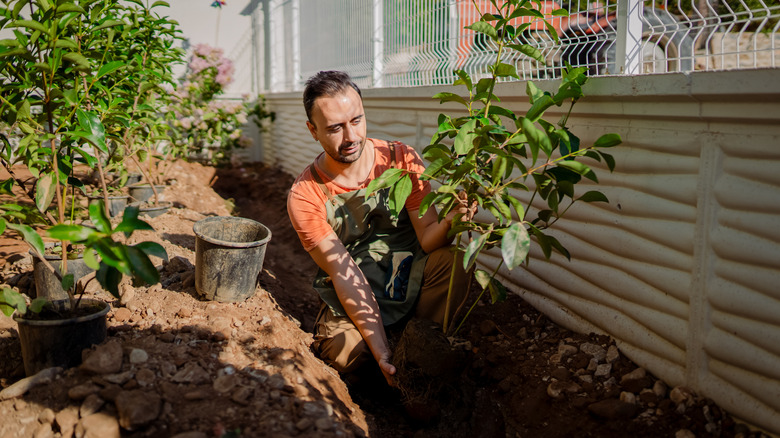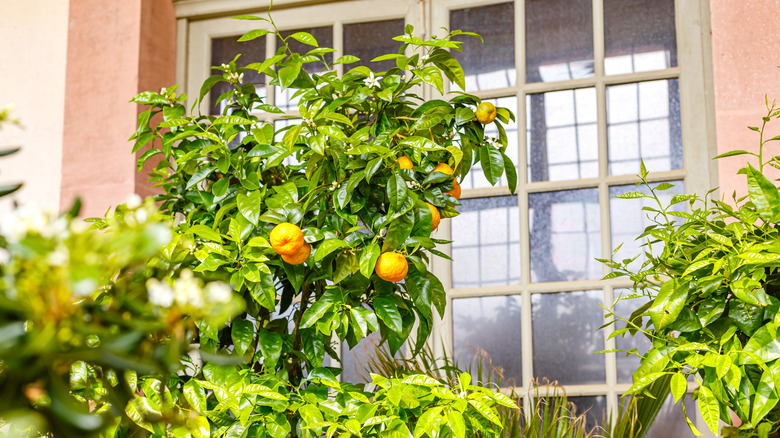The Low-Maintenance Fruit Tree That Beginners Can Grow In Small Spaces
We may receive a commission on purchases made from links.
The 'California Honey' mandarin tree, also known as Citrus reticulata, is one of the most adaptable dwarf garden plants you can buy. This compact tree typically grows to a height of about 10 to 15 feet but can be minimized to roughly 6 to 8 feet when grown in pots, making it one of the easier plants to grow in compact spaces such as a small garden or greenhouse. Fun fact: The 'California Honey' mandarin isn't native to California but to Southeast Asia.
The mandarin, perfect for a sunny balcony, not only boasts the benefits of deliciously sweet fruit in about two to three years, but it's also one of the most forgiving "baby" plants you can find. It requires minimal pruning and is self-pollinating, so there is no need to grow more than one or worry about environmental conditions that may affect beneficial pollinator access. This tasty shrub is also less prone to the many common pest issues that may affect similar fruit plants, though it's helpful to maintain a monthly pest maintenance routine–especially during its growing season.
Mandarins, like most citrus trees, prefer warmer temperatures and their ideal hardiness zones are 9 and 10. Keeping them flourishing requires a simple routine of pruning, watering, and regular feeding with citrus fertilizer. They're also great for beginner growers, as you can purchase them as grafted dwarfs from local or online plant nurseries, so you don't have to go through the long process of growing a plant from seeds.
Quick tips to keep your mandarin tree thriving
This citrus variety is not known to be invasive, but some pruning will help to keep it manageable and healthy. Not only does pruning help the plant stay compact, but it allows you to remove any growing 'suckers' that may take up nutritional resources from the tree. Also, mandarins love soaking up the sun, so it's best to place this dwarf plant in an area where it can receive at least 8 hours of sunlight each day.
Mandarins prefer moist, well-draining soil, but fine-tuning their watering frequency doesn't have to be complicated. This low-maintenance plant does well with weekly waterings when planted in containers or in the ground. Regularly checking the soil for dryness can help prevent underwatering, and frequency may need to be adjusted per climate conditions.
If the soil is moist, wait another day or two to check it again. Like any other fruit-bearing plants, mandarins need micronutrients to survive, and the main ones include iron, zinc, and, of course, magnesium. You can find this plant food in your typical citrus fertilizer, such as Miracle-Gro Fruit & Citrus or Espoma Organic Citrus. Before adding fertilizer for the first time, be sure to read and follow the directions on the package to ensure that you're setting your plant up for success.

